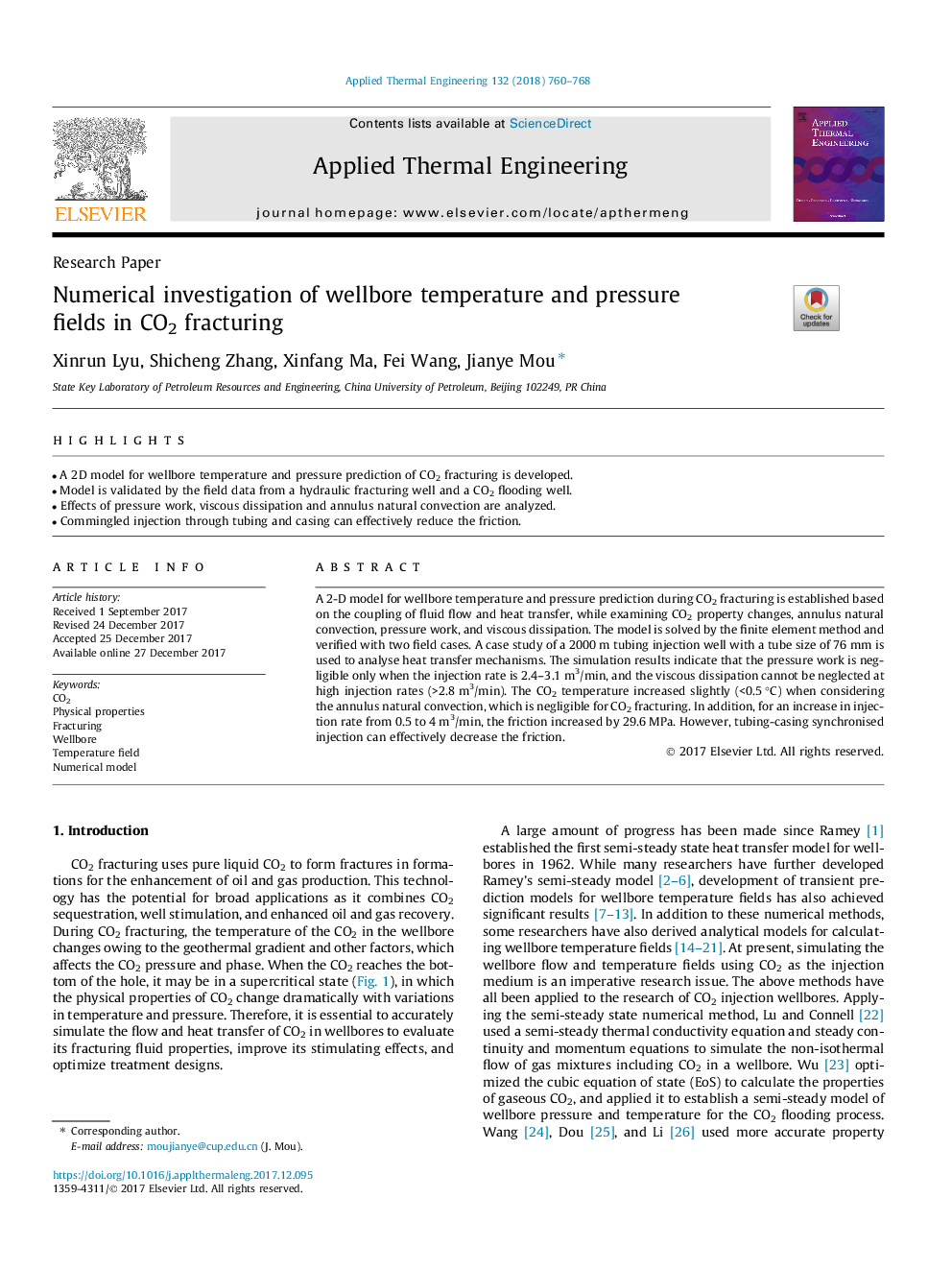| Article ID | Journal | Published Year | Pages | File Type |
|---|---|---|---|---|
| 7046120 | Applied Thermal Engineering | 2018 | 9 Pages |
Abstract
A 2-D model for wellbore temperature and pressure prediction during CO2 fracturing is established based on the coupling of fluid flow and heat transfer, while examining CO2 property changes, annulus natural convection, pressure work, and viscous dissipation. The model is solved by the finite element method and verified with two field cases. A case study of a 2000â¯m tubing injection well with a tube size of 76â¯mm is used to analyse heat transfer mechanisms. The simulation results indicate that the pressure work is negligible only when the injection rate is 2.4-3.1â¯m3/min, and the viscous dissipation cannot be neglected at high injection rates (>2.8â¯m3/min). The CO2 temperature increased slightly (<0.5â¯Â°C) when considering the annulus natural convection, which is negligible for CO2 fracturing. In addition, for an increase in injection rate from 0.5 to 4â¯m3/min, the friction increased by 29.6â¯MPa. However, tubing-casing synchronised injection can effectively decrease the friction.
Related Topics
Physical Sciences and Engineering
Chemical Engineering
Fluid Flow and Transfer Processes
Authors
Xinrun Lyu, Shicheng Zhang, Xinfang Ma, Fei Wang, Jianye Mou,
